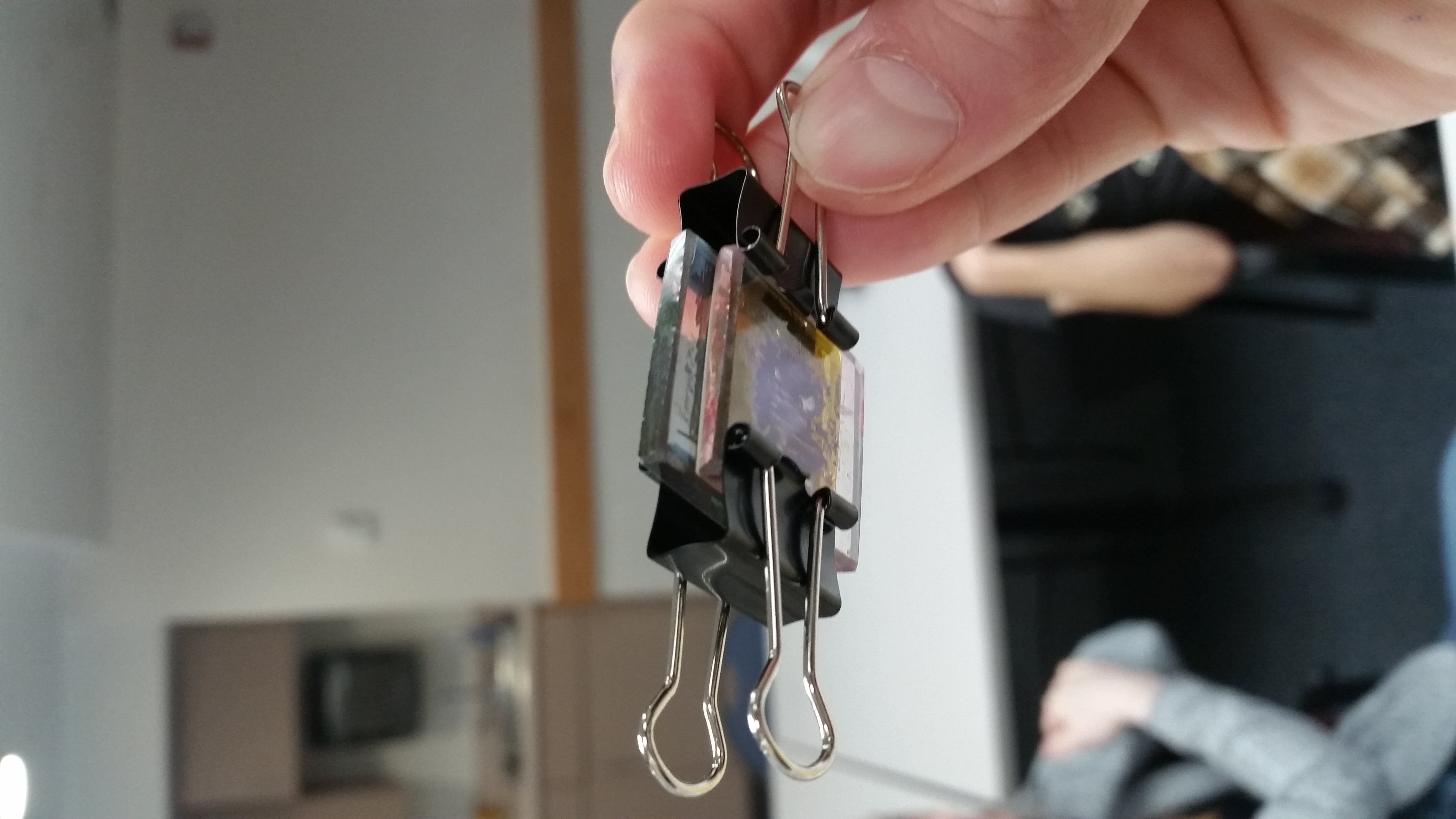
For our first trip for 2018 to KIPP, we decided to show students how to build a solar cell out of household materials and introduce them to polarized light.
Initially, we gave students a short introduction on the different sources of energy and emphasized the importance of renewable sources of energy for the sustainable development of our society. We were excited to discover that the students were aware of the limitations and disadvantages of non-renewable energy sources, and were interested in learning more about alternative sources of energy. After the introductory presentation, the SFA mentors split the students into groups of two. Each group was given a pair of glass slides: one slide had a side coated with a thin titania paste, and the other slide had a side coated with conductive Indium Tin Oxide (ITO). One student from each group used a pencil to coat the conductive side with graphite, whereas the other dipped the glass slide coated with titania in a raspberry-ethanol solution.
While waiting for the titania coated slide to soak in the raspberry solution, we used two sets of polarizing films to introduce students to the exciting properties of polarized light. At first, SFA mentors took a polarizing film and put it against a lamp demonstrating that the lamp is visible through the first polarizing film. By putting a second polarizing film between the first film and the lamp, the SFA mentors were able to tune how visible the lamp was by rotating the two polarizers relative to each other. The students were awed when they peered through the polarizers and saw the lamp disappearing when the relative angle between the two polarizing films was 90o.
After playing with the polarizers, the students returned to their glass slides to complete their solar cells. They removed the slide from the raspberry juice and laid it on top of the slide with the graphite-coated side. Subsequently, SFA mentors went around the different groups to add a few drops of electrolyte, iodine to the solar cells and measure their performance. The students were excited to see how the readings in the voltmeters connected to their solar cells jumped in response to UV radiation.